Key Takeaways
1. Your Brain is a Vast, Untapped Universe
What we are gathering from our efforts at the moment is a knowledge that the mind is infinitely more subtle than we previously thought, and that everyone who has what is ironically called a 'normal' mind has a much larger ability and potential than was previously thought.
Incredible potential. The human brain is far more complex and capable than we typically realize. With billions of neurons and countless interconnections, its potential for learning, creativity, and memory is virtually limitless. Recent research reveals that we've only scratched the surface of understanding its true capabilities.
- The brain's interconnections are more numerous than atoms in the universe.
- We use less than 1% of our brain's potential.
- The brain is constantly evolving and adapting.
Two brains in one. The brain is divided into two hemispheres, each with distinct functions. The left brain is associated with logic, language, and analysis, while the right brain is associated with creativity, imagination, and spatial awareness. Developing both sides of the brain leads to synergistic improvements in overall mental performance.
- Left brain: logic, language, reasoning, number, linearity, analysis
- Right brain: rhythm, music, images, imagination, color, parallel processing, daydreaming, face recognition, pattern recognition
Unlocking your potential. By understanding how the brain works, we can learn to use it more effectively. This involves developing both sides of the brain, using proper learning techniques, and challenging our preconceived notions about our own abilities.
2. Reading is More Than Just Recognizing Words
Reading is the individual's total interrelationship with symbolic information.
Beyond decoding. Reading is not simply about recognizing words on a page; it's a complex process involving recognition, assimilation, integration, retention, recall, and communication. Many reading problems stem from inadequate initial training that focuses solely on recognition, neglecting other crucial aspects.
- Recognition: Knowing the alphabetic symbols
- Assimilation: The physical process of light entering the eye
- Intra-integration: Linking parts of the information
- Extra-integration: Analysis, criticism, appreciation
- Retention: Storing information
- Recall: Retrieving stored information
- Communication: Using the information
Eye movement matters. The eyes don't move smoothly across a page; they move in a series of stops and quick jumps. Slow readers often fixate on individual words, skip back, and regress, leading to poor comprehension and low speeds. Efficient reading involves reducing fixation time, expanding the size of each fixation, and eliminating unnecessary regressions.
- Slow readers: one word at a time, back-skipping, visual wandering
- Efficient readers: groups of words, reduced regressions, smooth flow
Speed and comprehension. Faster reading doesn't mean sacrificing comprehension; in fact, it often enhances it. By taking in meaningful units of words, faster readers reduce mental work, maintain concentration, and improve overall understanding.
3. Memory is a Skill, Not a Fixed Trait
The reasons why our performances do not match even our minimum potentials is that we are given no information about what we are, or about how we can best utilise our inherent capacities.
Recall during learning. Memory recall is not constant during a learning period. We tend to remember more from the beginning and end of a learning session, as well as items that are repeated, unique, or associated with other concepts. Recall tends to decline as time goes on unless the mind is given brief rests.
- Recall is higher at the beginning and end of learning periods.
- Repetition, association, and uniqueness enhance recall.
- Recall declines without breaks.
Recall after learning. After a learning period, recall initially rises briefly as the brain integrates new information, then drops sharply. Within 24 hours, most detailed information is lost. Proper review techniques are essential to prevent this loss and maintain high recall.
- Recall rises briefly after learning, then drops steeply.
- 80% of detail is lost within 24 hours without review.
- Review is essential for long-term retention.
Review is crucial. Spaced review, done at the point just before recall is about to drop, is essential for long-term memory. Regular review not only maintains knowledge but also enhances future learning by creating a stronger foundation of interconnected information.
- First review: 10 minutes after learning
- Second review: 24 hours later
- Third review: 1 week later
- Fourth review: 1 month later
4. Key Words Unlock Deeper Understanding
Every word is 'multi-ordinate', which simply means that each word is like a little centre on which there are many, many little hooks.
Words are multi-dimensional. Each word has multiple meanings and associations, making it a complex entity. The meaning of a word changes depending on its context and the individual's personal experiences. Understanding this multi-ordinate nature of words is crucial for effective communication and recall.
- Each word has many "hooks" that connect to other words.
- Context and personal experience shape word meaning.
- Individual interpretations of words vary widely.
Key recall vs. creative words. Key recall words are specific and funnel a wide range of images, while creative words are more evocative and general. Effective note-taking requires using key recall words that trigger specific memories, rather than creative words that lead to general associations.
- Key recall words: specific, image-forming, direct
- Creative words: evocative, general, less specific
Standard notes are inefficient. Traditional sentence-based notes are inefficient because they contain many unnecessary words that don't aid recall. Key word noting, on the other hand, focuses on the essential concepts, making recall faster and more effective.
- Standard notes: 90% unnecessary words, slow recall
- Key word notes: focus on essential concepts, faster recall
5. Mind Maps Mirror Your Brain's Natural Thinking
Rather than starting from the top and working down in sentences or lists, one should start from the centre or main idea and branch out as dictated by the individual ideas and general form of the central theme.
Linear vs. non-linear thinking. Traditional methods of communication, like speech and print, are linear, but the brain is not. The brain works in a multi-dimensional, interconnected manner, making mind maps a more natural way to organize and recall information.
- Speech and print: linear, one word at a time
- Brain: multi-dimensional, interconnected
Mind maps are organic. Mind maps start with a central idea and branch out with related concepts, creating a visual representation of the brain's thought process. This structure allows for easy addition of new information, clear connections between ideas, and improved recall.
- Central idea: clearly defined
- Relative importance: indicated by proximity to center
- Links between concepts: immediately recognizable
- Easy addition of new information
Advanced mind mapping. Advanced mind mapping techniques include using arrows, codes, geometrical shapes, artistic dimensions, color, and images to enhance recall and creativity. These techniques make mind maps more "holographic," mirroring the brain's complex and multi-dimensional nature.
- Arrows: show connections
- Codes: add extra dimensions
- Shapes: mark similar areas
- Dimension: make ideas stand out
- Color: enhance memory and creativity
- Images: make maps more memorable
6. Study is a Skill, Not a Chore
By concentrating on the individual and his abilities we will finally and sensibly have placed the learning situation in its proper perspective.
The study book as a threat. Many people experience fear and reluctance when approaching study books due to negative associations with exams and the pressure to perform. This fear can lead to procrastination and ineffective study habits.
- Textbooks are seen as "hard" and represent work.
- Exams create fear and anxiety.
- Procrastination is a common response to fear.
Traditional study methods are flawed. Traditional study techniques often involve rigid, linear approaches that don't cater to individual needs or the nature of the brain. These methods focus on memorizing facts rather than understanding concepts and developing effective learning skills.
- Rigid, inflexible approaches
- Focus on memorization, not understanding
- Neglect of individual learning styles
New approach: focus on the individual. Effective study should focus on teaching individuals how to learn, think, recall, and create, rather than simply bombarding them with information. This involves understanding how the brain works and developing personalized study techniques.
- Focus on individual learning skills
- Understanding how the brain works
- Personalized study techniques
7. Preparation is Key to Effective Study
It is essential that you practise if you wish to be able to use effectively the methods and information outlined.
The browse. Before starting any study session, it's essential to browse through the entire text to get a general feel for its structure, difficulty, and organization. This initial overview helps to set the stage for more focused study.
- Casual, rapid flipping through pages
- Observing structure, difficulty, and organization
- Scanning for summaries, conclusions, and diagrams
Time and amount. Deciding on the time to be devoted to study and the amount of material to be covered is crucial for effective learning. Breaking study sessions into 20-40 minute intervals with short breaks optimizes recall and understanding.
- Decide on time and amount before starting
- Break study sessions into 20-40 minute intervals
- Breaks allow for integration and relaxation
Noting current knowledge. Before diving into new material, jot down everything you already know about the subject in key word and mind map form. This activates your memory, improves concentration, and establishes a good mental set.
- Jot down existing knowledge in key words
- Use mind maps to organize thoughts
- Activates memory and improves concentration
Defining goals. Before reading, define the questions you want answered and the goals you want to achieve. This helps to focus your attention and makes the learning process more efficient.
- Define questions and goals before reading
- Focuses attention and improves efficiency
- Main themes act as "grappling hooks" for information
8. Application is the Active Part of Learning
The more he maintains his current body of knowledge, the more he will be able to absorb and handle.
Study overview. Before reading the main body of the text, do a study overview by scanning for results, tables, subheadings, summaries, conclusions, and other graphic elements. This provides a framework for understanding the text.
- Scan for results, tables, subheadings, etc.
- Provides a framework for understanding
- Use a visual guide to track eye movement
Preview. After the overview, preview the text by focusing on the beginnings and ends of paragraphs, sections, and chapters. This helps to identify the main ideas and themes.
- Focus on beginnings and ends of paragraphs
- Identify main ideas and themes
- Read summaries and conclusions first
Inview. After the overview and preview, inview the remaining material, filling in the gaps and addressing difficult areas. It's often better to move over difficult points and return to them later.
- Fill in the gaps and address difficult areas
- Move over difficult points and return later
- Subconscious processing can help with difficult areas
Review. After completing the study session, review the material using mind maps and key words. This reinforces learning and ensures long-term retention.
- Review using mind maps and key words
- Reinforces learning and ensures retention
- Regular review is essential for long-term memory
Last updated:
FAQ
What's "Use Your Head" about?
- Overview of the book: "Use Your Head" by Tony Buzan is a guide to understanding and maximizing the potential of the human brain. It provides insights into how the mind works and offers techniques to improve memory, reading speed, and problem-solving skills.
- Focus on brain capacity: The book emphasizes the untapped capacity of the human brain and aims to help readers develop abilities that often remain dormant.
- Practical exercises included: It includes tests and exercises designed to enhance reading power and memory, making it a practical resource for personal development.
Why should I read "Use Your Head"?
- Enhance cognitive skills: The book offers strategies to improve cognitive functions such as memory, reading speed, and problem-solving, which are valuable in both personal and professional settings.
- Understand brain potential: It provides a deeper understanding of the brain's potential, encouraging readers to explore and develop their mental capabilities.
- Practical application: With exercises and real-world applications, the book is not just theoretical but also practical, allowing readers to apply what they learn immediately.
What are the key takeaways of "Use Your Head"?
- Brain's untapped potential: The book highlights the vast, often underutilized potential of the human brain and encourages readers to explore it.
- Importance of mind mapping: Tony Buzan introduces mind mapping as a powerful tool for organizing thoughts and enhancing memory and creativity.
- Study and memory techniques: It provides specific techniques for improving study habits and memory retention, making learning more efficient and effective.
How does Tony Buzan explain the brain's functioning in "Use Your Head"?
- Two-brain theory: Buzan explains that humans have two hemispheres in the brain, each responsible for different types of mental activities, such as logic and creativity.
- Interconnected neurons: He discusses the complex interconnections of neurons and how they contribute to the brain's immense capacity for learning and memory.
- Recent discoveries: The book incorporates the latest discoveries about the brain, emphasizing its adaptability and potential for growth.
What is the Buzan Organic Study Method?
- Study approach: The Buzan Organic Study Method is a flexible approach to studying that emphasizes understanding and integrating information rather than rote memorization.
- Preparation and application: It involves preparation steps like browsing and setting goals, followed by application steps such as previewing, inviewing, and reviewing study material.
- Personalized learning: The method is adaptable to individual needs, allowing learners to tailor their study techniques to suit their personal learning styles.
What are mind maps, and how are they used in "Use Your Head"?
- Visual tool: Mind maps are a visual tool for organizing information, using branches to represent different ideas and their connections.
- Enhance memory and creativity: They help enhance memory and creativity by allowing the brain to see relationships between concepts and ideas.
- Application in various fields: Mind maps can be used for note-taking, planning, problem-solving, and even in meetings to improve communication and understanding.
How does "Use Your Head" suggest improving reading speed?
- Eye movement techniques: The book suggests techniques to improve eye movements, such as using a visual guide to maintain a steady reading rhythm.
- Expanded focus: It encourages readers to expand their focus to take in more words at a time, reducing the number of fixations per line.
- Motivational practice: Buzan emphasizes the importance of motivation and practice in increasing reading speed, suggesting exercises like high-speed perception training.
What memory techniques are introduced in "Use Your Head"?
- Mnemonic systems: The book introduces mnemonic systems, such as the Number-Rhyme System, to help remember lists and sequences.
- Review strategies: It emphasizes the importance of regular review to reinforce memory and prevent forgetting.
- Associative memory: Buzan highlights the role of associative memory, encouraging the use of vivid, imaginative images to link information.
What are the best quotes from "Use Your Head" and what do they mean?
- "Your mind is better than you think": This quote emphasizes the book's central theme that the human brain has immense, often untapped potential.
- "The brain is a keyboard on which hundreds of millions of different melodies can be played": It illustrates the brain's complexity and capacity for diverse thoughts and actions.
- "Study is consequently made a personal, interactive, continually changing and stimulating experience": This quote reflects the book's approach to making learning a dynamic and engaging process.
How does "Use Your Head" address common learning problems?
- Identifying issues: The book identifies common learning problems such as lack of concentration, poor memory, and inefficient reading habits.
- Providing solutions: It offers practical solutions and exercises to address these issues, helping readers overcome obstacles to effective learning.
- Encouraging self-awareness: Buzan encourages readers to become more aware of their learning processes and to develop personalized strategies for improvement.
How does Tony Buzan's approach differ from traditional study methods?
- Focus on the individual: Unlike traditional methods that focus on rote memorization, Buzan's approach emphasizes understanding and personal engagement with the material.
- Integration of creativity: His methods integrate creativity and imagination, using tools like mind maps to enhance learning and memory.
- Flexible techniques: The Buzan Organic Study Method is adaptable, allowing learners to tailor their study techniques to their unique needs and preferences.
What impact has "Use Your Head" had since its publication?
- Global reach: Since its first publication in 1974, the book has been translated into twelve languages and sold over 250,000 copies worldwide.
- Influence on education: It has influenced educational practices by introducing innovative techniques for learning and memory enhancement.
- Continued relevance: The book remains relevant today, with its principles and techniques still widely used in personal development and educational settings.
Review Summary
Use Your Head receives mostly positive reviews, with readers praising its practical techniques for improving memory, studying, and brain function. Many find the mind mapping concept particularly useful. Some readers wish they had discovered the book earlier in their academic careers. While a few find the content basic or outdated, most appreciate Buzan's accessible approach to enhancing cognitive skills. The book is often recommended for students and those seeking to maximize their mental potential.
Similar Books

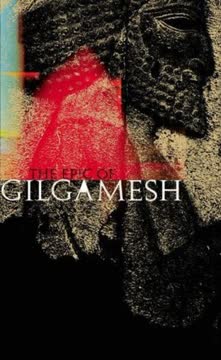
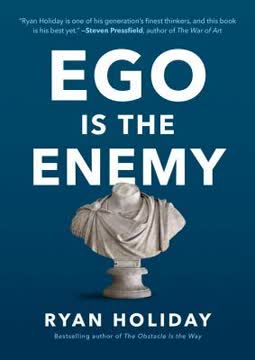
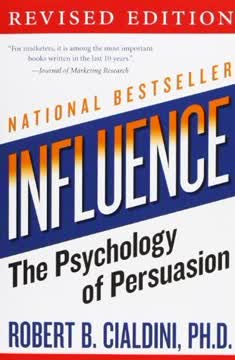


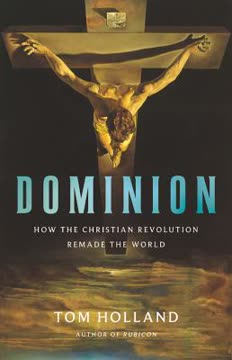
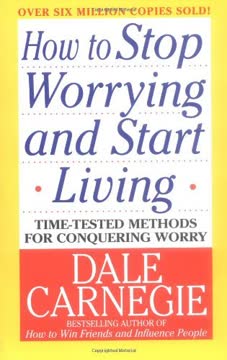

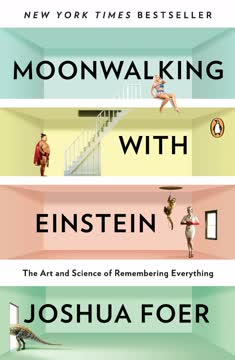
Download PDF
Download EPUB
.epub digital book format is ideal for reading ebooks on phones, tablets, and e-readers.












